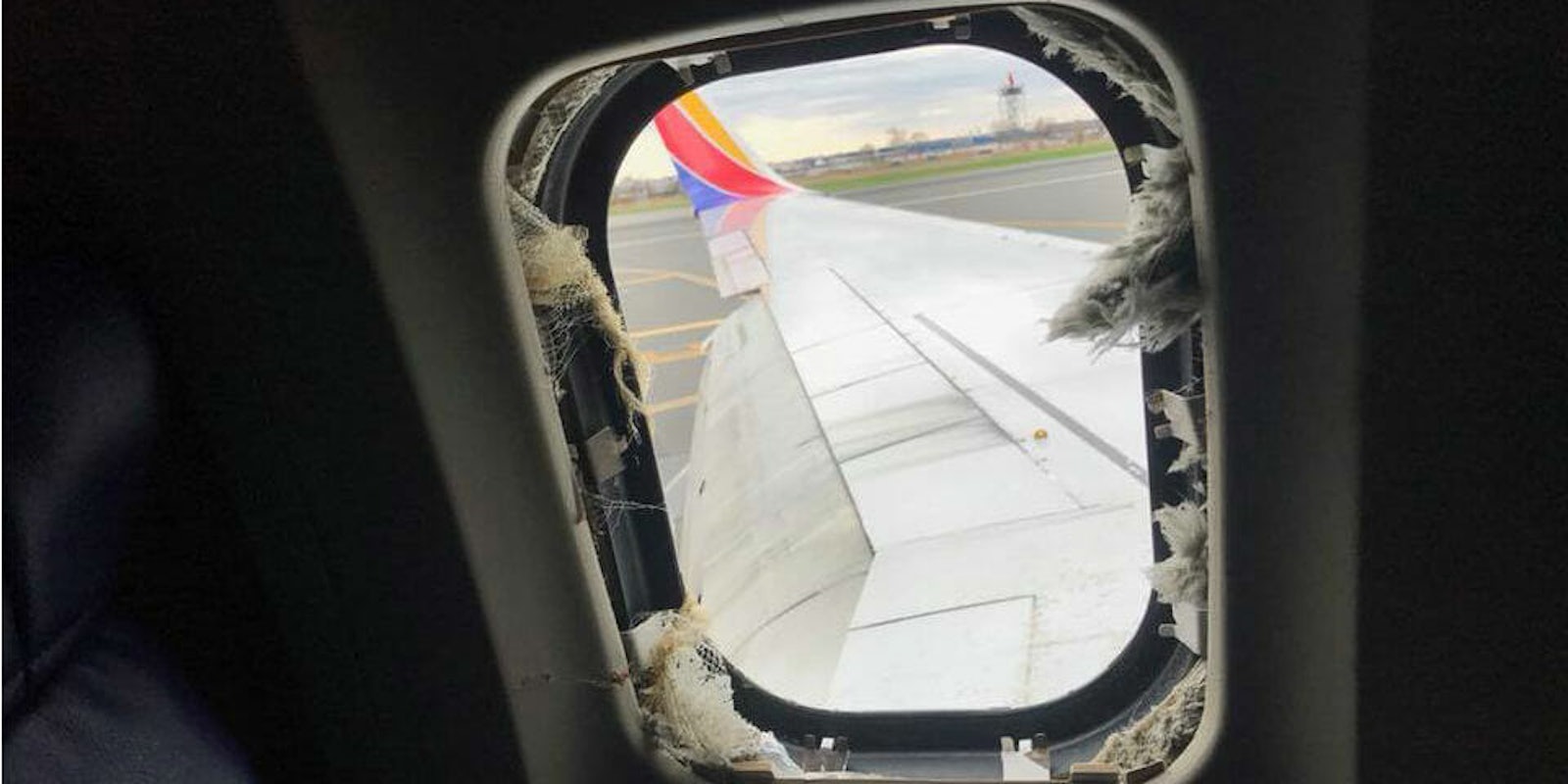One person was killed yesterday when the engine on Southwest Airlines flight 1380 exploded, forcing the pilot to make an emergency landing. While the cause of the incident remains a mystery, multiple reports suggest the victim, Jennifer Riordan, 43, was sucked out of a shattered window.
“You hear the pop and she was sucked out from the waist up,” one passenger told NBC News. “There was blood on the windows…her arms were actually out of the airplane and her head was out of the airplane.”
Fellow passengers successfully pulled her back onboard, but the mother of two later died at a Philadelphia hospital.
While this sounds like something you’d see in the movies, it’s not the first time a passenger has been sucked out of an airplane window following damage to the fuselage. In fact, any damage to the outside of an aircraft that could depressurize the cabin presents a potentially fatal risk.
As the Verge points out, a cargo door failure in United Airlines flight 811 resulted in explosive decompression, and nine passengers were ejected from the aircraft and lost out at sea. In 1988, one year earlier, the roof of Aloha Airlines flight 243 was ripped off and a flight attendant was ejected from the aircraft.
The vortex resulting from damage to the plane forms from changes in pressure between the inside and outside of the aircraft. As you know, the inside of an airplane is pressurized so you can breathe at high altitudes where air pressure is low. If you’ve ever hiked up a mountain above 10,000 feet, you have an idea of how difficult it is to get enough air.
At sea level, the atmospheric pressure is about 14.7 psi (pounds per square inch). Fly up to 33,000 feet and the psi drops to around 4. The inside of a commercial airliner is kept at a pressure altitude of about 8,000 feet, Thomas Anthony, the director of the University of Southern California’s aviation safety and security program, told the Verge.
This difference in air pressure creates an extremely strong suction so that if the outside of the plane is punctured, everything onboard will be sucked outside as the air pressure attempts to equalize. As you might imagine, the higher the plane is flying, the bigger the gap in air pressure, and the more dangerous the situation.
That’s not to say what you see in films isn’t exaggerated. The air pressure inside and outside the plane will quickly equalize with the resulting interior pressure dropping lower than before. That’s where the oxygen masks come in to provide additional air.
“Initially there will be a rush of air, enough to blow loose papers and items of clothing around. About one second later, the pressure inside and outside equalizes, and you’re just left with air rushing past the hole in the fuselage,” Jonathan Franklin, a commercial pilot with KLM Royal Dutch Airlines wrote in a blog post.
Southwest Airlines is now working with the National Transportation Safety Board and Federal Aviation Administration to assess the tragic incident and determine what caused it.


